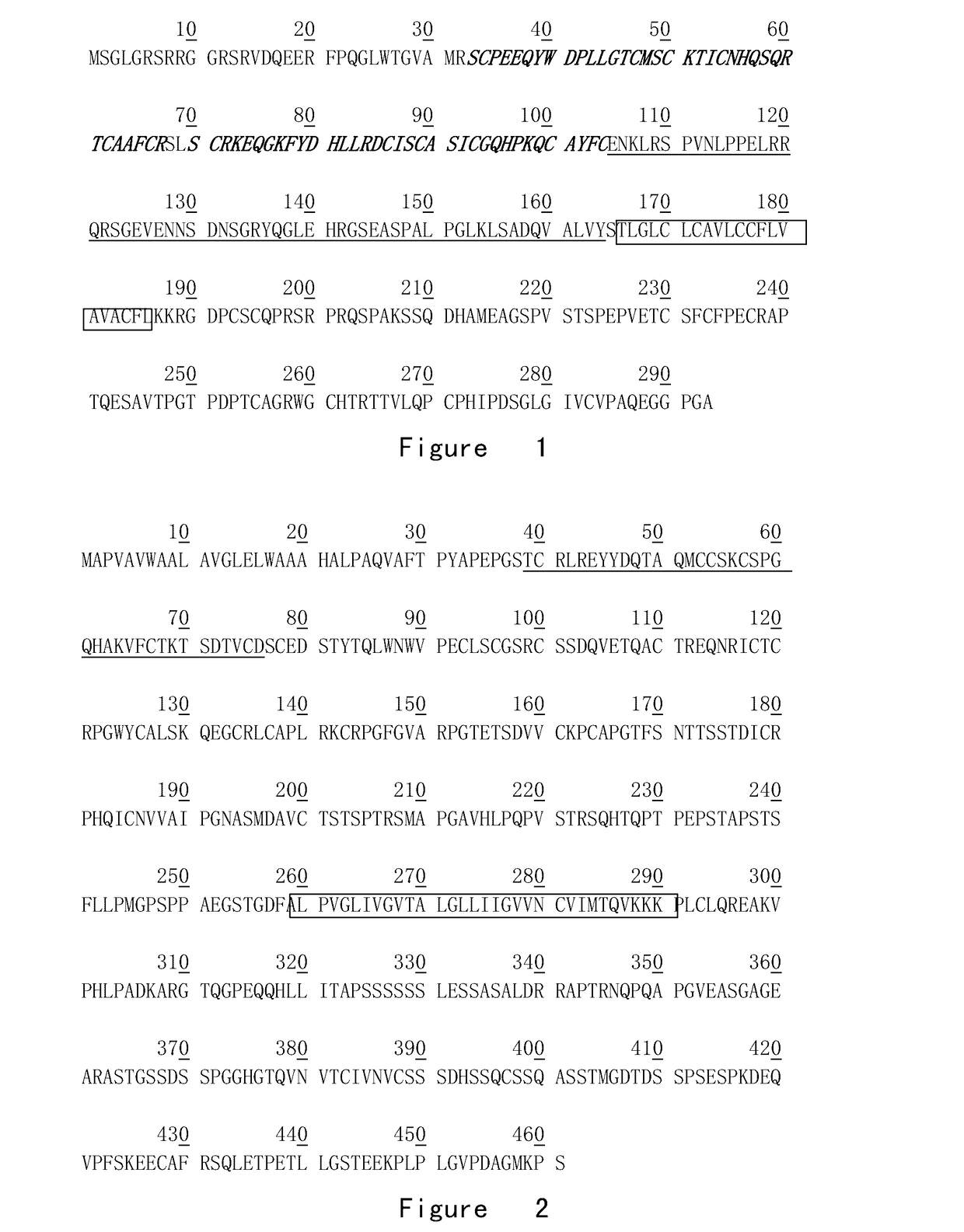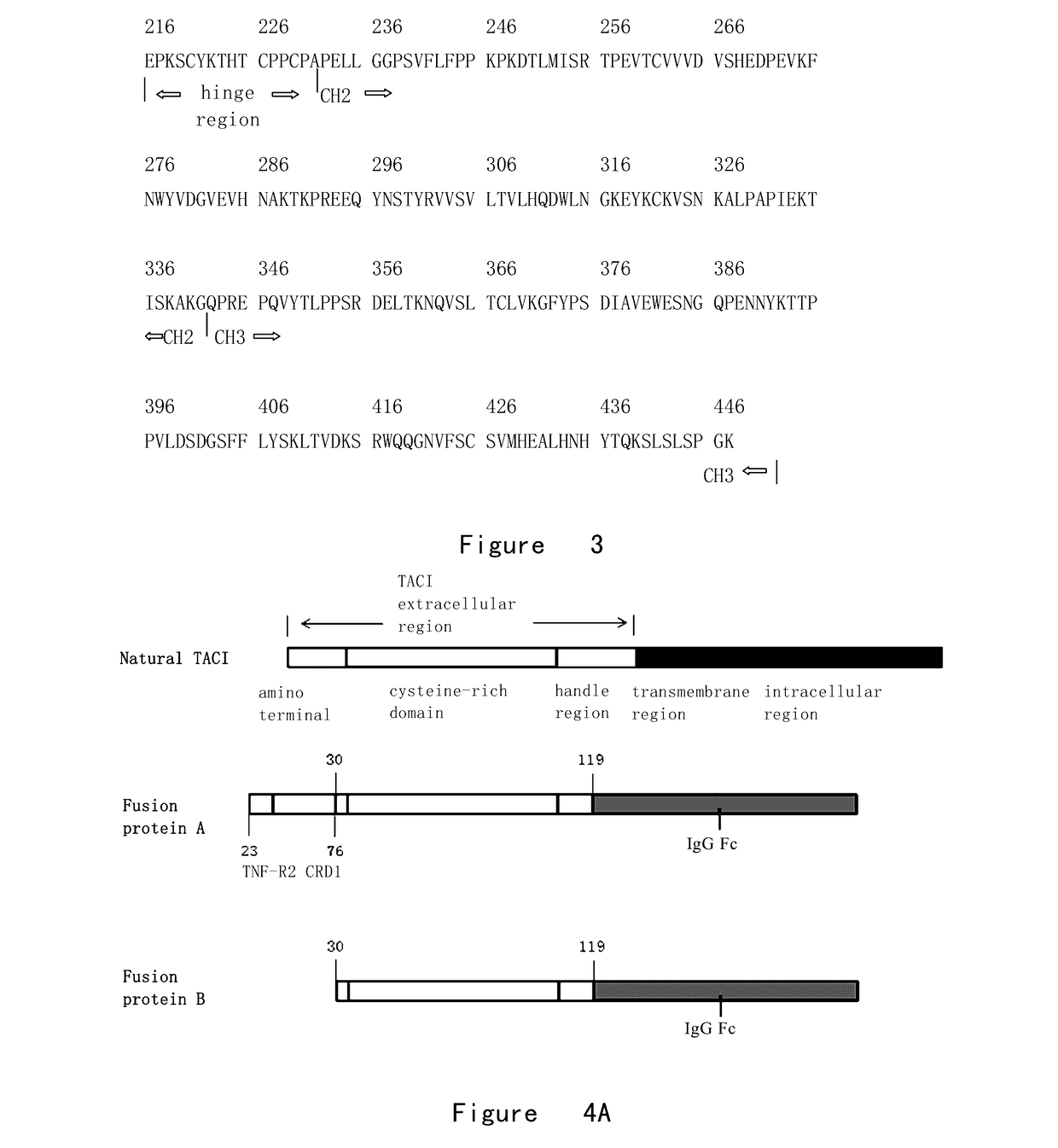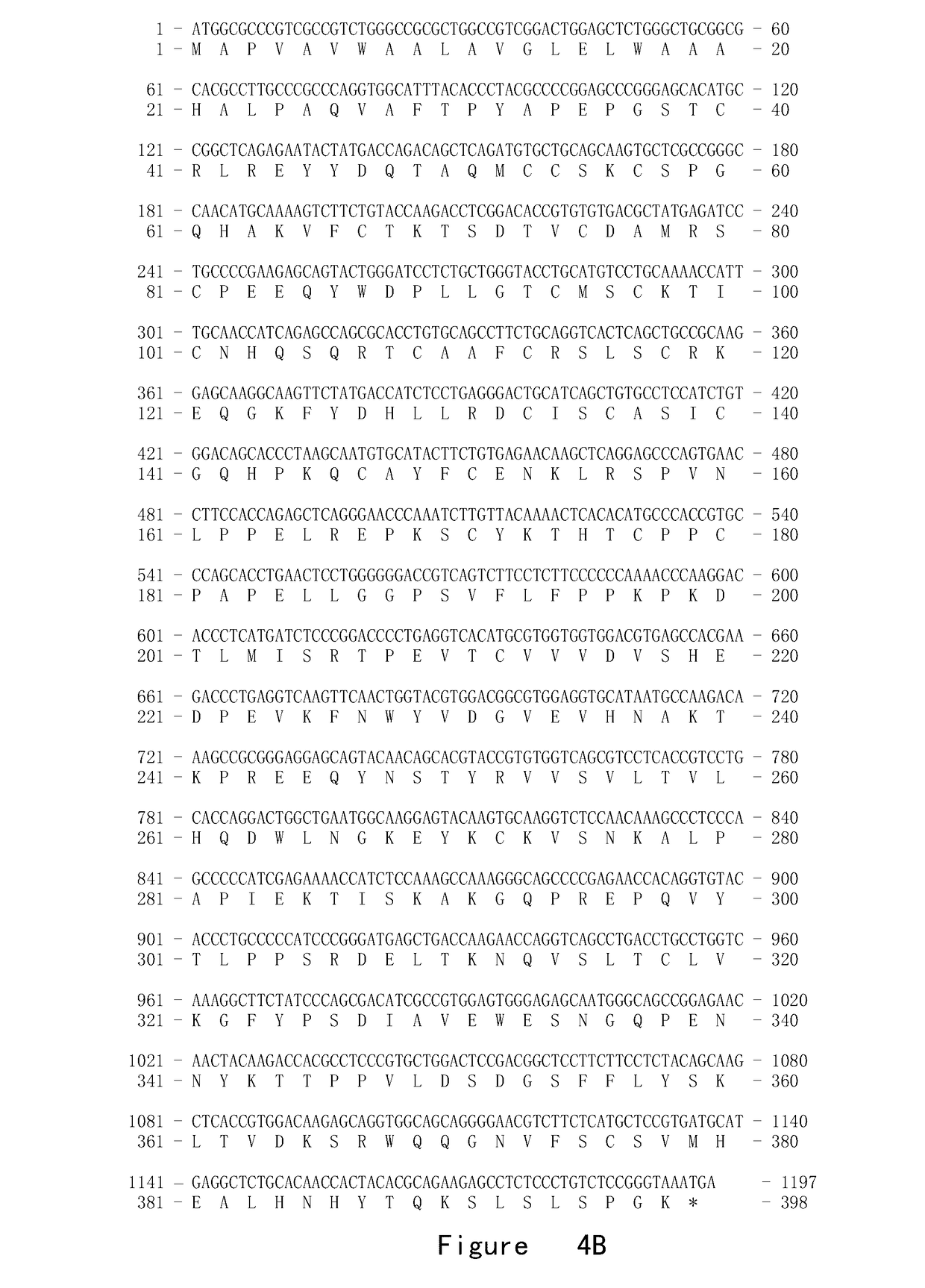Fusion protein inhibiting taci-baff complex formation and preparation method therefor and use thereof
a technology of fusion protein and complex, which is applied in the field of biochemical and pharmaceutical, can solve problems such as autoimmune disease or cancer, and achieve the effect of effectively inhibiting or blocking the baff/appril pathway
- Summary
- Abstract
- Description
- Claims
- Application Information
AI Technical Summary
Benefits of technology
Problems solved by technology
Method used
Image
Examples
example 1
[0112]Construction of Plasmid Expressing Fusion Protein A
[0113]A precursor of the fusion protein A (FIG. 4) was composed of the following three fragments from N-terminus to C-terminus, and the specific amino acid sequences were as follows.
[0114]Fragment 1. Position 1-76 of TNF-R2 amino acid sequence, comprising the first cysteine-rich domain (FIG. 2).
[0115]Fragment 2. Position 30-119 of TACI amino acid sequence, comprising two cysteine-rich domains and partial main stem sequence (FIG. 1).
[0116]Fragment 3. Position 216-447 of human γ1 amino acid sequence, comprising a hinge region and two CH regions (FIG. 3).
[0117]Synthesis of cDNA of fragment 1.
[0118]PCR template was human cDNA prepared by a conventional method. 5′-end primer (AAGCTTGCGGCCGCGAGCTCGGATCCACT (SEQ ID NO.: 6)) was a sequence of plasmid vector. To clone into pT vector, Not I enzyme cleavage site was introduced at 5′-end. 3′-end primer sequence was GGGGCAGGATCTCATAGCGTCACACACGGTGTCCGAG (SEQ ID NO.: 7), in which 19 TACI ri...
example 2
[0123]Construction of Plasmid Expressing Fusion Protein B
[0124]A precursor of the fusion protein B (FIG. 4) was composed of the following three parts from N-terminus to C-terminus, and the specific amino acid sequences were as follows.
[0125]Fragment 1. Human CD33 protein signal peptide containing the first 16 amino acids of N-terminal.
[0126]Fragment 2. Position 30-119 of TACI amino acid sequence, comprising two cysteine-rich domains and partial main stem sequence (FIG. 1).
[0127]Fragment 3. Position 216-447 of human IgG1 amino acid sequence, comprising a hinge region and two CH regions (FIG. 3).
[0128]The recombinant gene encoding fusion protein B was constructed by the overlapping polymerase chain reaction (PCR). Polymerase chain reaction (PCR) was carried out by using Plantium SuperMix (Invitrogen) according to the manufacturer's instructions. Each PCR fragment was purified by using gel purification kit for DNA fragment (Qiagen). Since TACI does not have protein secretion signal pep...
example 3
[0134]Construction of Fusion Protein Expression Cell Line
[0135]In this example, a CHO DG44 cell line for stable and high level of protein expression was established by a stable transfection and gene amplification method. The suspension cultivation of cloned CHO DG44 cells were carried out in serum-free and animal protein-free medium.
[0136]The original CHO DG44 cells were from Invitrogen company, and the cell culture and passage methods were based on the company's operating manual. The suspension cultivation of cells without being transfected were carried out in CD DG44 medium containing 8 mM Glutamine and 0.18% Fluronic F-18.
[0137]A plenty of expression plasmids encoding the fusion protein were prepared using Qiagen kit. The plasmids were purified by ethanol precipitation once so that the plasmids were not contaminated by bacteria. Before gene transfection, CD DG44 cells were passaged for three generations and then transfected. When the cell density reached 1×106 / ml, 1 ml was taken ...
PUM
 Login to View More
Login to View More Abstract
Description
Claims
Application Information
 Login to View More
Login to View More - R&D
- Intellectual Property
- Life Sciences
- Materials
- Tech Scout
- Unparalleled Data Quality
- Higher Quality Content
- 60% Fewer Hallucinations
Browse by: Latest US Patents, China's latest patents, Technical Efficacy Thesaurus, Application Domain, Technology Topic, Popular Technical Reports.
© 2025 PatSnap. All rights reserved.Legal|Privacy policy|Modern Slavery Act Transparency Statement|Sitemap|About US| Contact US: help@patsnap.com



